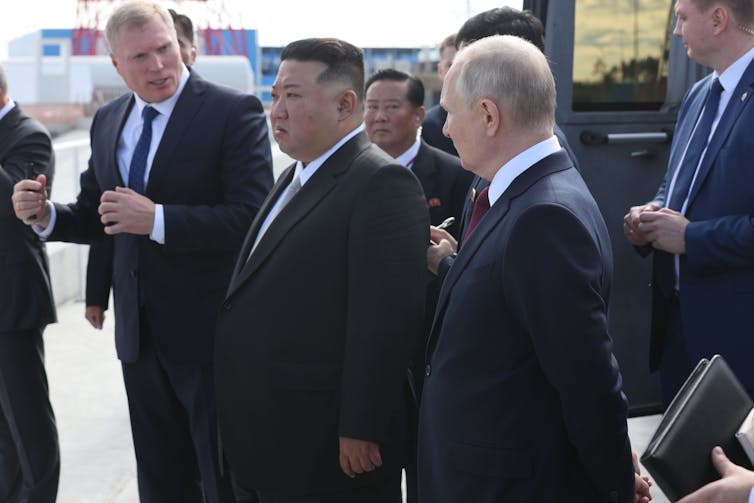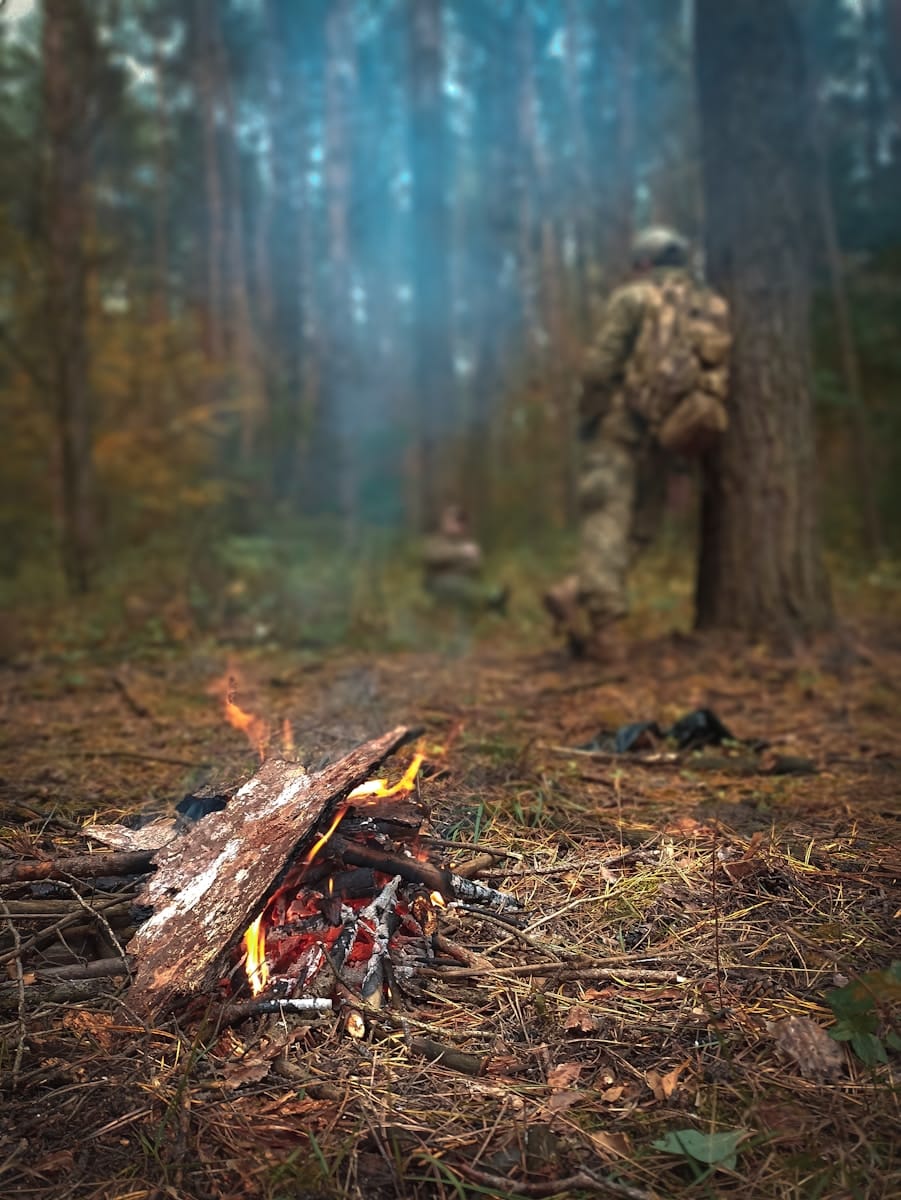Tara Sonenshine, Edward R. Murrow Professor of Practice in Public Diplomacy, Tufts University
In retrospect, there was perhaps nothing surprising about Russia’s decision to invade Ukraine on Feb. 24, 2022.
Vladimir Putin’s intentions were, after all, hiding in plain sight and signaled in the months running up to the incursion.
What could not be foreseen, however, is where the conflict finds itself now. Heading into its third year, the war has become bogged down: Neither is it a stalemate, nor does it look like either side could make dramatic advances any time soon.
Russia appears to be on the ascendancy, having secured the latest major battlefield victory, but Ukrainian fighters have exceeded military expectations with their doggedness in the past, and may do so again.
Analysis of the world, from experts
Get our newsletter
But as a foreign policy expert and former journalist who spent many years covering Russia, I share the view of those who argue that the conflict is potentially at a pivotal point: If Washington does not continue to fully support President Volodymyr Zelenskyy and his military, then Ukraine’s very survival could be at risk. I believe it would also jeopardize America’s leadership in the world and global security.
How the conflict develops during the rest of 2024 will depend on many factors, but three may be key: supplies, information and political will.
The supplies race
Russia and Ukraine are locked in a race to resupply its war resources – not just in terms of soldiers, but also ammunition and missiles. Both sides are desperately trying to shore up the number of soldiers it can deploy.
In December 2023, Putin ordered his generals to increase troop numbers by nearly 170,000, taking the total number of soldiers to 1.32 million. Meanwhile, Ukraine is said to be looking at plans to increase its military by 500,000 troops.
Of course, here, Russia has the advantage of being able to draw on a population more than three times that of Ukraine. Also, whereas Putin can simply order up more troops, Zelenskyy must get measures approved through parliament.
Aside from personnel, there is also the need for a steady supply of weapons and ammunition – and there have been reports that both sides are struggling to maintain sufficient levels.
Russia appears particularly eager to boost its number of ballistic missiles, as they are better equipped for countering Ukraine air defense systems despite being slower than cruise missiles.
Increasingly, Moscow appears to be looking to North Korea and Iran as suppliers. After Kim Jong Un, the North Korean leader, visited Russia in 2023, the U.S. accused Pyongyang of supplying Russia with ballistic missiles. Iran, meanwhile, has delivered to Russia a large number of powerful surface-to-surface ballistic missiles and drones.

Ukraine, meanwhile, is dependent on foreign military equipment.
Supplies were stronger at the beginning of the war, but since then, Ukraine’s military has suffered from the slow, bureaucratic nature of NATO and U.S. deliveries. It wasn’t, for example, until the summer of 2023 that the U.S. approved Europe’s request to provide F-16s to Ukraine.
Ukraine needs more of everything, including air defense munitions, artillery shells, tanks and missile systems. It is also running short of medical supplies and has seen hospital shortages of drugs at a time when rampant infections are proving resistant to antibiotics.
Perhaps the biggest factor that remains in Russia’s favor when it comes to supplies is the onerous restrictions placed on Ukraine from the West, limiting its ability to attack Russian territory with U.S. or NATO equipment to avoid a wider war. For example, the Ukrainian military had a High Mobility Artillery Rocket System with a 50-mile range that could hit targets inside Russia, but it modified the range to keep the U.S. military satisfied that it would not cross a Russian red line.
If this policy could be relaxed, that might be a game changer for Ukraine, although it would raise the stakes for the U.S.
The information war
The Ukraine conflict is also a war of messaging.
To this end, Putin uses propaganda to bolster support for the campaign at home, while undermining support for Ukraine elsewhere – for example, by planting stories in Europe that cause disenchantment with the war. One outrageous claim in the early weeks of the war was that Zelenskyy had taken his own life. The rumor came from pro-Russia online operatives as part of an aggressive effort to harm Ukrainian morale, according to cybersecurity firm Mandiant.
More recently, in France, stories appeared that questioned the value of assistance to Ukraine and reminded the public of the negative impact of Russian sanctions on the French. Stirring dissent in this way is a classic Putin play to raise doubts.
And investigative reporting points toward a disinformation network being run out of the Kremlin, which includes social media bots deployed on Ukrainian sites spreading stories of Zelenskyy’s team being corrupt and warning that the war would go badly.
Given that Putin controls the Russian media and is quick to crack down on dissent, it is hard to really know what Russians think. But one reputable polling agency recently reported strong support in Russia for both Putin and the war in Ukraine.
Ukrainians, too, still support the fight against Russia, polling shows. But some war fatigue has no doubt lowered morale.
There are other signs of domestic strain in Ukraine. At the end of 2023, tensions grew between Zelenskyy and his top military commander, General Valery Zaluzhny who had complained about weaponry. Zelenskyy ended up firing the military chief, risking political backlash and underscoring that not all is well in the top chain of command.
Should disunity and war fatigue continue into the war’s third year, it could serious impair Ukraine’s ability to fight back against a resurgent Russian offensive.
The politics of conflict
But it isn’t just domestic politics in Ukraine and Russia that will decide the outcome of the war.
U.S. politics and European unity could be a factor in 2024 in determining the future of this conflict.
In the U.S., Ukraine aid has become politicized – with aid to Ukraine becoming an increasingly partisan issue.
In early February, the Senate finally passed an emergency aid bill for Ukraine and Israel that would see US$60.1 billion go to Kyiv. But the bill’s fate in the House is unknown.
And the looming 2024 presidential elections could complicate matters further. Former president Donald Trump has made no secret of his aversion to aid packages over loans, calling them “stupid,” and has long argued that Americans shouldn’t be footing the bill for the conflict. Recently, he has made bombastic statements about NATO and threatened not to adhere to the alliance’s commitment to protect members if they were attacked by Russia.
And uncertainty about American assistance could leave Europe carrying more of the financial load.
European Union members have had to absorb the majority of the 6.3 million Ukrainians who have fled the country since the beginning of the conflict. And that puts a strain on resources. European oil needs also suffer from the sanctions against Russian companies.
Whether these potential war determinants – supplies, information and politics – mean that the Ukraine war will not be entering a fourth year in 12 months time, however, is far from certain. In fact, one thing that does appear clear is that the war that some predicted would be over in weeks looks set to continue for some time still.
This article is republished from The Conversation under a Creative Commons license. Read the original article.






